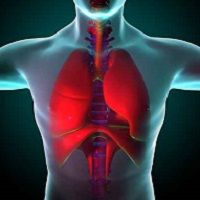COPD and Asthma Symptomatic Overlap
Smokers and nonsmokers with chronic asthma share symptoms of chronic obstructive pulmonary disease (COPD), likely due to small airway remodeling. The concurrent disease is often referred to as asthma COPD overlap syndrome.

Smokers and nonsmokers with chronic asthma share symptoms of chronic obstructive pulmonary disease (COPD), likely due to small airway remodeling, suggest findings published in the journal Chest. The concurrent disease is often referred to as asthma COPD overlap syndrome (ACOS).
Researchers from the UCLA Medical Center examined the symptoms of both COPD and asthma in order to determine the extent of the overlap. The authors wrote that the overlap has been assumed to be due to large and especially small airway remodeling. However, others, they said, reversible loss of lung elastic recoil in acute and persistent loss in patients with moderate to severe chronic asthma who never smoked and its adverse effect of maximum expiratory airflow. The mechanism or mechanisms that mitigate the loss of lung elastic recoil and persistent expiratory airflow limitation in non smokers with chronic asthma consistent with ACOS are still not known in general studies.
With this study, the researchers determined that the patients with asthma are at risk for COPD due to a pro-inflammatory and proteolytic cascade, a statement explained. The researchers continued that this process may lead to a lung tissue breakdown, unsuspected diffuse, mild centrilobular emphysema that is not easily detected clinically.
The 10 patients that were examined in the study all had asthma and were nonsmokers. They had persistent expiratory airflow obstruction, though partial reversibility existed. Each of the patients had significant reduced lung elastic recoil. Three patients also had unsuspected, microscopic mild centrilobular emphysema though it was not detected in an autopsy lung CT scan.
“These sentinel pathophysiologic observations need to be confirmed to further unravel the epiphenomenon of ACOS,” the authors wrote. “The pro-inflammatory and proteolytic mechanism(s) leading to lung tissue breakdown need to be further investigated.”
The statement commented that the airflow obstruction found in smokers is similar to that in asthmatic nonsmokers and COPD patients, but the reasons for this finding are still unknown.